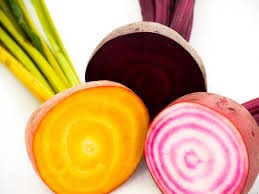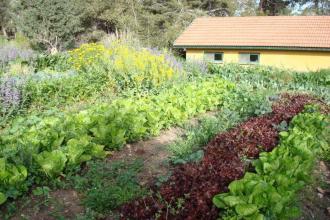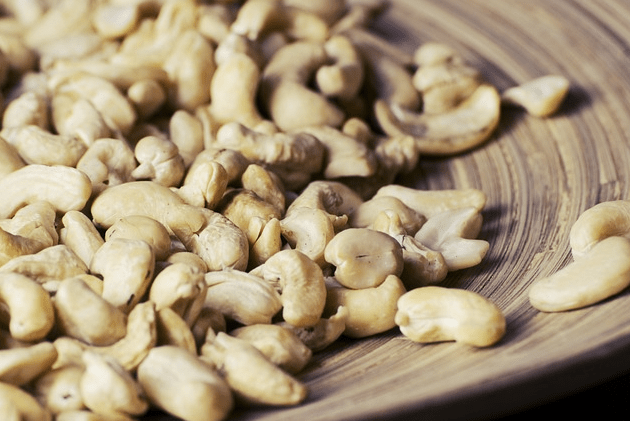Purim is right around the corner and all costume lovers are excited.
The costumes are pulled out of the attic, the facial paints are ready for action, the glitter is within reach and the joy is in the air. Appropriately for the coming Purim, please have a look at a few vegetables for which Purim is all year round, since they look in disguise. Many people give these vegetables a nice long gaze, read their sign, wonder a little, grab one vegetable and inspect it carefully… Then ask one of us "Are you sure it's…?"
Of course, the organic vegetables themselves do not know they're strange. Strangeness, in this context, is geographical. We are accustomed to seeing our bananas yellow, but there are certainly other places around the world (like Central America) where bananas are red, for example. Similarly to the way that citrus trees growing along the streets do not surprise the average Israeli – but mango trees (which are grown as decorative trees in other parts of the world) may raise an eyebrow.
So what vegetables appear to be in disguise?
Organic Yellow Beet –
Beets have been known to mankind for their culinary and health benefits for a long long time. Scripts dating back to 800 BC describe beets growing in the Hanging Gardens of Babylon, for example. Beets are delicious in a variety of forms of preparation – raw (please try sometime and you will be surprised how tasty it is to eat just thin slices of beet, with a few drops of lemon), roasted, fried, or cooked. Even pickled. Beets are rich with a variety of excellent nutritional components (beets are totally a super-food) and are also responsible for a significant portion of the world's sugar production. Compared with the red beet, the main character in the famous borscht soup and also the worst agent when it comes to leaving big red spots on our clothes, the yellow version does not cause stains. The yellow beet has a more delicate taste and is slightly sweet. It contains good amounts of nutritional fiber, vitamin C, vitamin A, beta carotene, flavonoids, lycopene, folic acid … (and more).

Organic Purple Carrot –
Carrots have many disguises and can appear in many colors, like red, white, yellow and black. The Romans believed carrots are an aphrodisiac and therefore loved to plant and grow them it in their gardens. The carrot arrived in Europe not before the 10th century. In the Netherlands, until the end of the 16th century, the carrots were mostly purple, with mutations of white and yellow here and there (without the purple pigment anthocyanin). Then, one day, some Dutch farmers decided that orange is the new purple and began collecting seeds of strangely orange carrots. They developed carrots in their color we know today. The orange carrot is rich in beta carotene (if you really like the color and think it emphasizes the color of your eyes, or if you feel like dressing up as a carrot for Purim – eating large quantities of carrots will make your skin slightly orange colored. This is not nutritional advice, of course) and is sweeter than the purple version.
In World War II, the British were capable of bombing enemy aircraft at night, thanks to the radar they used – but the official version they publicly announced was that their soldiers could see in the dark thanks to the massive consumption of carrots. Not only the Germans were impressed by this lie, but also the British – many of whom began growing carrots in their private gardens.
Organic purple sweet potato –
Also this vegetable (thickened root, more precisely), which is common in the Asian kitchen, gets its purple color of anthocyanins, which is in common not only with purple carrots, but also with strawberries, cherries and other fruits and vegetables of this shade. Other sweet potatoes come in white, brown, and the most familiar to us – reddish orange. They made their way to the old world as distinguished guests in the belly of the Columbus ship. They also reached Asia, and in Japan the white and purple species were developed. Today, a large quantity of sweet potato produce is imported from Hawaii to the US.
The purple sweet potato looks like another vegetable that is most common in the Philippine kitchen and is called Ube, since they are both purple and look like sweet potatoes… But the ube, unlike the potato, grows above the ground. Both are an important source of food in places where they have been growing for thousands of years. Evidence was found that people ate sweet potatoes in Peru more than 10,000 years ago.
Organic sweet potato is a wonderful food for those who are concerned about blood sugar levels and their shape – it balances sugar levels, contains a lot of fiber and contributes to digestion. It contains a lot of iron, vitamin B, vitamin C, potassium and also magnesium.
Whatever costume you choose, keep healthy!
Yours,
The garden team
We can expect to receive in our organic vegetable baskets (draft only):
Cucumbers
Tomatoes
Lettuce
Potatoes
Carrots
Swiss chard
Parsley
Cabbage
Celery
In the LARGE vegetable baskets also:
Zucchini
Sweet potatoes
Cilantro
In the organic fruit baskets:
Clementine
Pecan, unpeeled
Sweetie
Bananas
In the LARGE fruit baskets also:
Oranges
Red grapefruit
More bananas











